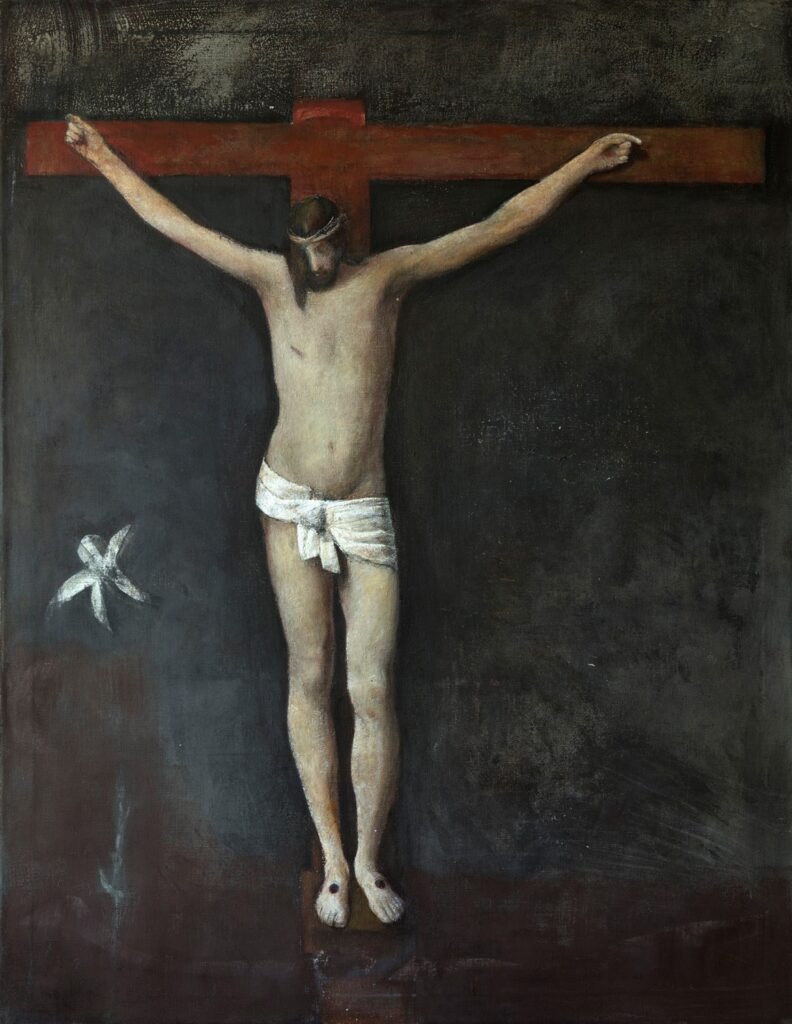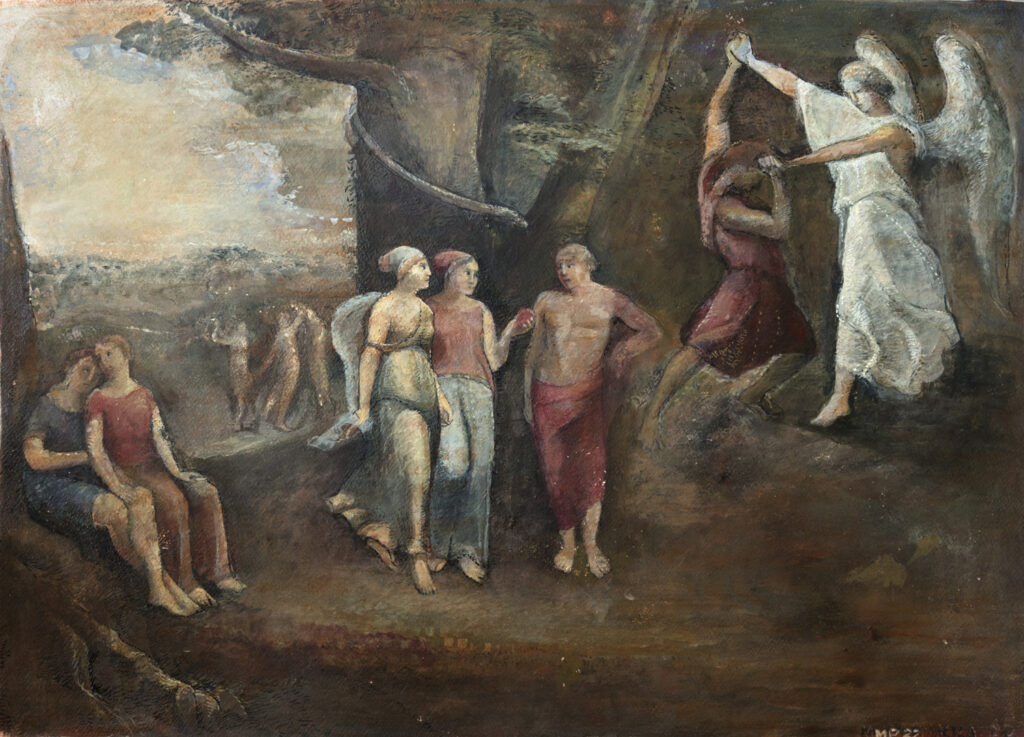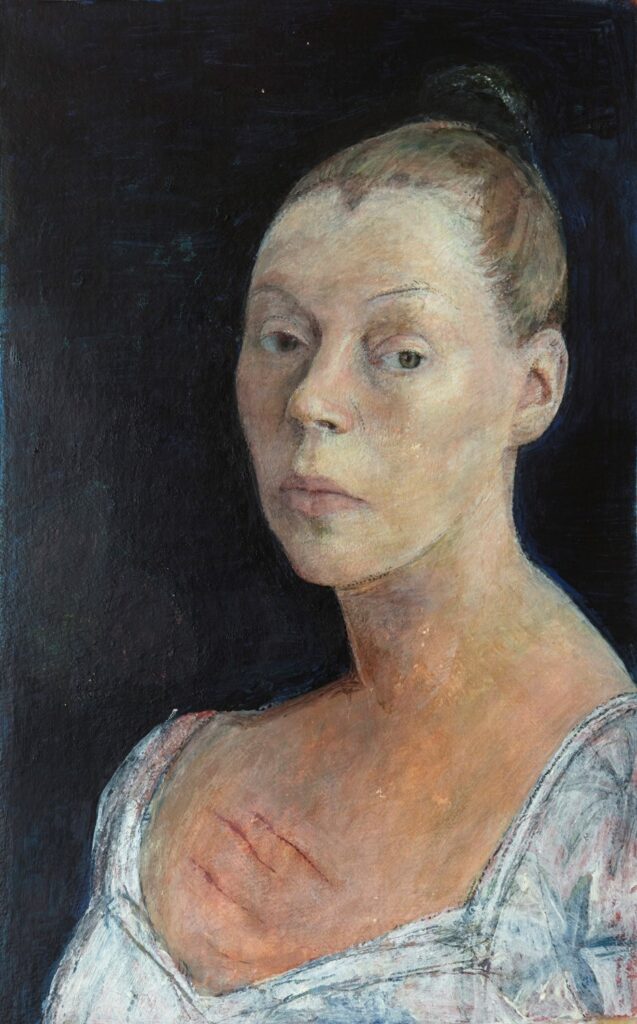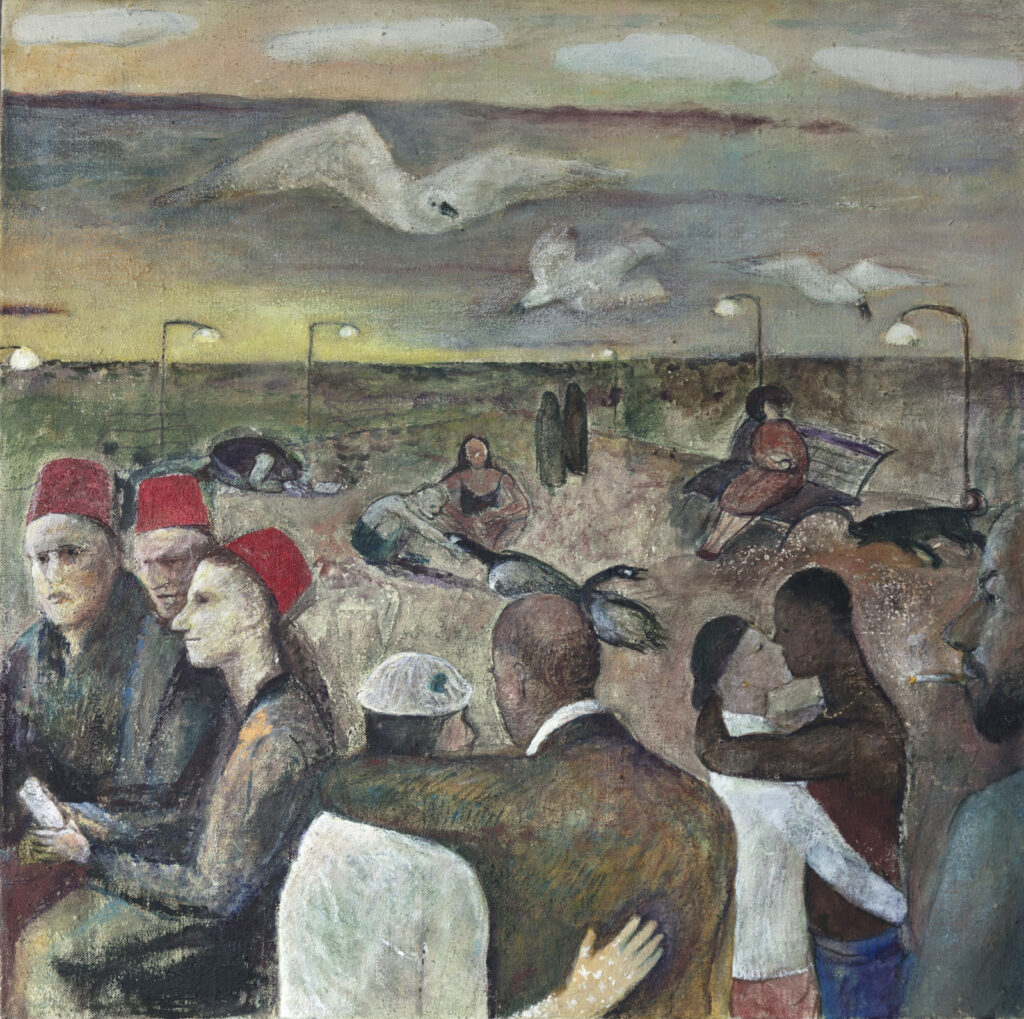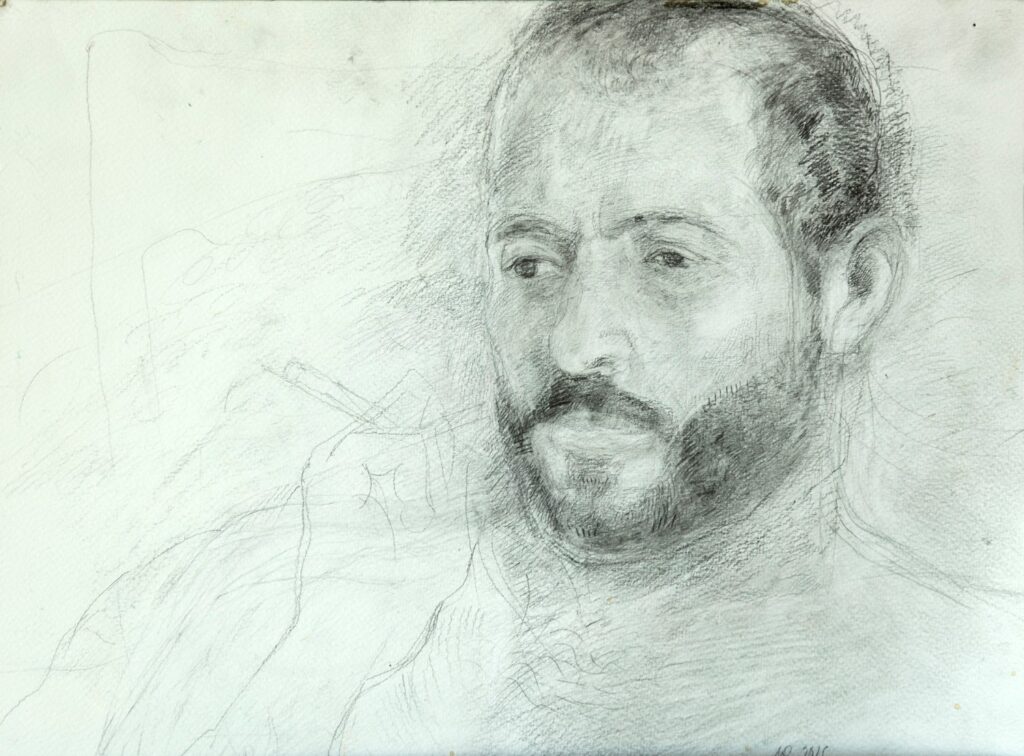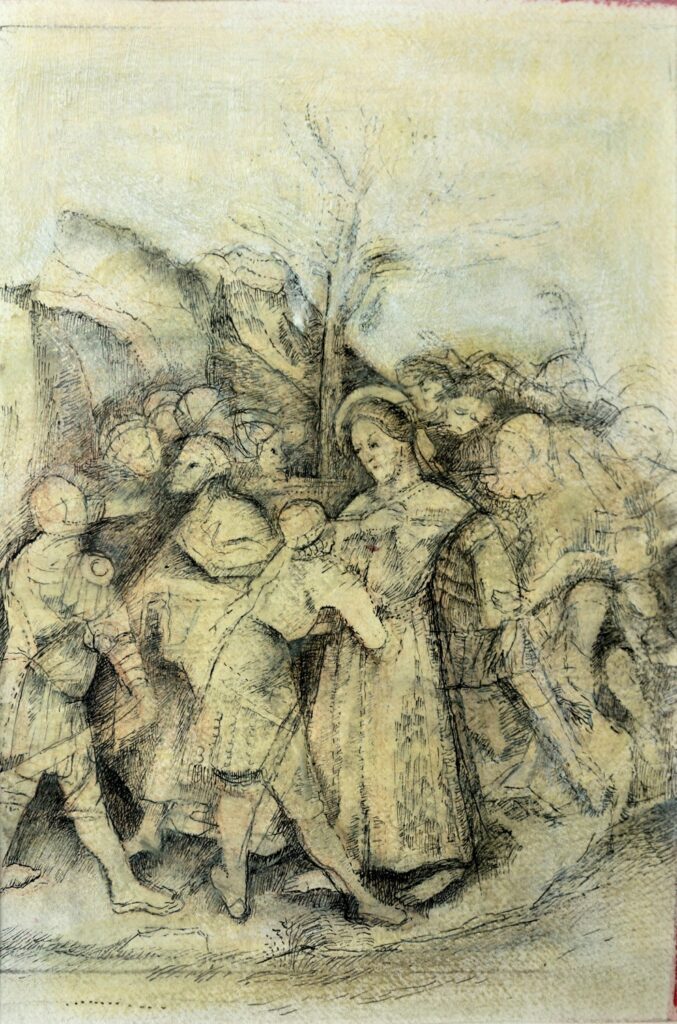1.-22.12.2023
Merja Parikka
Life’s Canvas
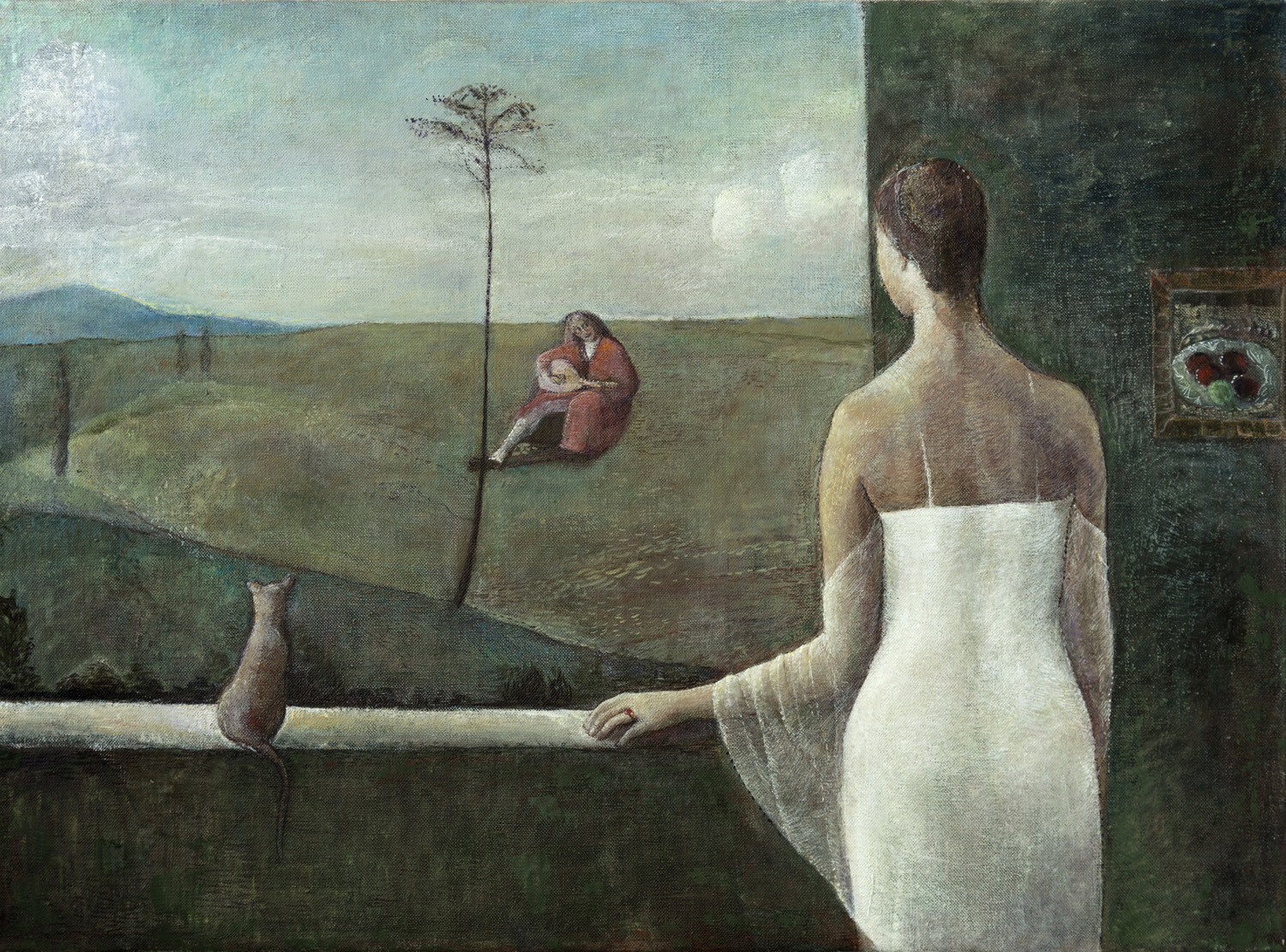
Aris Arusa, 2021-23, tempera, öljy, 80 x 61 cm
Katson maalausta. Se kiinnittyy kuva-aiheiltaan ja maalaustekniikaltaan hämmentävän konkreettisesti länsimaisen taidehistorian suuriin teoksiin 1400-luvulta eteenpäin olematta niiden kopio tai edes pastissi. Mitä minun tulisi ajatella maalauksen äärellä?
Taidemaalari Merja Parikka on melkein koko uransa hyödyntänyt taidehistoriasta tuttujen merkkiteosten kuvastoa. Hän on poiminut teosten kuvasisällön ajattomuuden ja ehtymättömyyden sekä yhdistänyt ne oman elämänsä kokemuksiin. Parikka lienee parhaiten tunnettu juuri omakuvistaan, joiden raadollinen paljastavuus, jos vain uskaltaa katsoa, vertautuu vaikkapa Frida Kahlon omaelämänkerrallisiin maalauksiin.Parikka onkin vienyt teostensa subjektiivisuuden niin äärimmilleen, että se on muuttunut universaaliksi.
Uudessa näyttelyssään Parikalla on aikaisempaa vähemmän omakuvia. Niissä hän näyttää löytäneen uutta lempeyttä itseään kohtaan. Taitelijan katse on siirtynyt entistä enemmän itsestä pois kohti ympärillä olevaa. Kysymystä naisen roolista miehen katseen ja tekojen objektina Parikka on tutkinut ja kommentoinut taiteessaan pitkään. Maailman peitelty petollisuus ja karnevaalimainen pinnallisuus nousevat hyvin esille tässäkin näyttelyssä, esimerkiksi maalauksissa Jaakobin paini ja Häslinki tai Raamatun tapahtumista nousevissa aiheissa. Mutta tärkeimmäksi havainnoksi jää ihmisen kaipuu tulla rakastetuksi. Näyttelyn nimi Life’s Canvas, elämän maalauskangas, tiivistää näitä sisältöjä hyvin.
Parikan maisema on pastoraalinen, vaikka siinä olisi oman aikamme merkkejä. Aiemmin hänen maalaustensa maisemat olivat lähes autioita, taustalla kaukaisuuteen hiipuvia. Nyt ne ovat alkaneet tulla lähemmäksi ja täyttyneet toisiinsa yhteyttä hakevista ihmisistä. Merja Parikka osoittaa, että hyvin tarkkakaan figuratiivisuus ei ole aikamme kuvavirrassa vanhanaikaista vaan terävän katseen paljastama todellisuus on ajatonta.
Arto Jurttila
I am looking at a painting. The motifs of the painting and its technique take me directly – in a bewilderingly concrete way – to the great works of Western art history from the 15th century onwards, without being a copy or even a pastiche. What should I think while looking at the painting?
Throughout her career, the painter Merja Parikka has drawn on the imagery of familiar iconic works from art history. She has extracted the timelessness and inexhaustibility of the pictorial content from those works and combined them back with her own life experiences. Parikka is probably best known for her self-portraits, the brutally unveiling boldness of which, if we just dare to look, is comparable to the autobiographical paintings of, say, Frida Kahlo. Parikka has taken the subjectivity in her works to such extremes that it has become universal.
In her new exhibition, Parikka has fewer self-portraits than before. She seems to have found new gentleness towards herself in them. However, the artist’s gaze has shifted more and more towards her surroundings from her own personal self. Parikka has already long studied and commented on the role of woman as an object of the male gaze and action in her art. The hidden treacherousness and carnivalesque superficiality of the world are also very much present in this exhibition; for example, in the paintings such as Jacob’s Wrestling and Hassle, or in the themes emerging from biblical events. But after all, the human yearning desire to be loved remains the most important observation in her new works. The title of the exhibition, Life’s Canvas, very well sums up these themes.
Parikka’s landscapes are pastoral, even if there are signs of our own time in them. In the past, her landscapes were almost deserted, fading into the distance in the background. Now they have begun to come closer, filled with people seeking contact with each other. Merja Parikka demonstrates that amidst today´s flow of images, figurative precision is not by any means old-fashioned, and the reality revealed through deep observation is timeless.
Arto Jurttila
